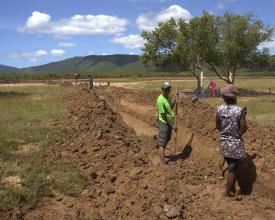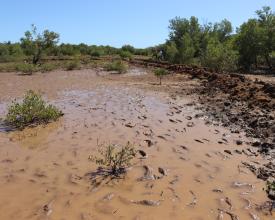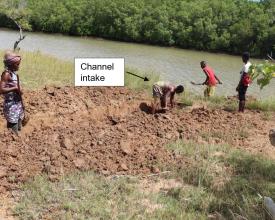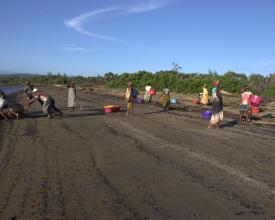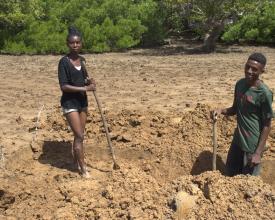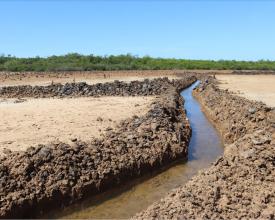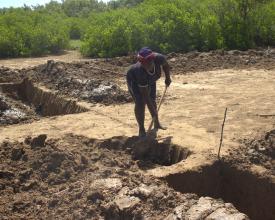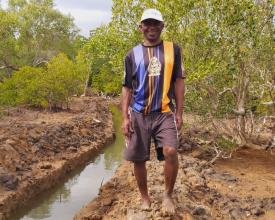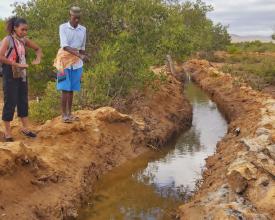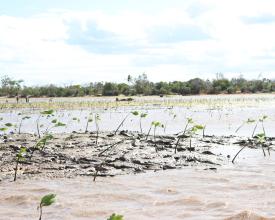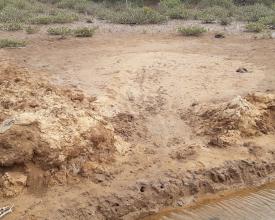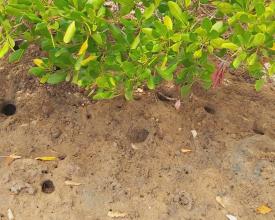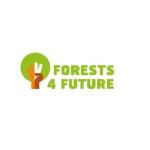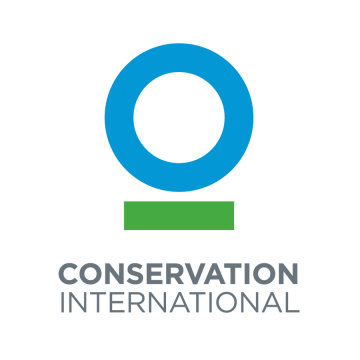
Community-Based and Assisted Natural Mangrove Restoration
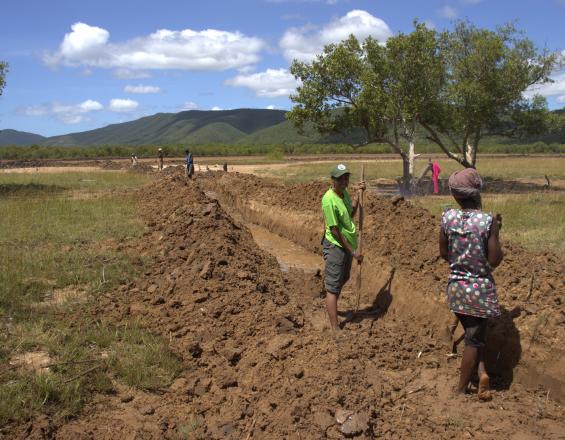
Mangroves are uniquely valuable coastal wetlands forming the natural transition zone between land and sea. They are preserving biodiversity, mitigating against climate change and sustaining livelihoods. However, they are globally degraded and are therefore a priority for ecosystem restoration.
Madagascar contains Africa’s fourth largest extent of mangroves with various species providing critical ecosystem goods and services to coastal communities and supporting rich biodiversity. Unfortunately, Madagascar’s mangroves are being rapidly degraded and, in some areas, completely deforested.
The Global Project Forests4Future (F4F), launched by the Deutsche Gesellschaft für Internationale Zusammenarbeit (GIZ), uses a low-cost Community-Based and Assisted Natural Mangrove Restoration method in the Diana region (Madagascar) to restore degraded mangrove ecosystems. This technique allows tidal currents and seedling (propagule) establishment in more inland located and degraded mangrove ecosystems using excavated water channels.
Context
Challenges addressed
The main drivers of mangrove degradation include increasing pressure from the local coastal population, small-scale conversion to agriculture, over-exploitation of forest products (timber, firewood, etc.), and erosion and sedimentation due to upstream agriculture and deforestation.
One major restoration challenge are the poor hydrological conditions of many degraded mangrove ecosystems which significantly hinder the growth of young propagules. This is especially the case for more inland located and degraded mangrove ecosystems. In general, these areas have limited or reduced connectivity to the sea – preventing tidal currents to reach and to allow seeding recruitment.
With the construction of tidal water channels, hydrological and soil conditions as well as seedling transport, settlement and growth are improved.
Restored mangrove ecosystems allow the return of many animal species that coastal communities, fishermen, farmers and other resource users can once again benefit.
Location
Process
Summary of the process
The four proposed building blocks are a sequence of tasks and activities that are repeated frequently (work cycle) to ensure the sustainability of the restoration method. They are also interconnected to one and each other. For example, if during Building Block 3 (Observation and monitoring of restored mangrove sites) damages in the channel system are observed, Building Block 2 (Preparatory meeting, mobilization of the community and implementation) will take effect again – meaning that the entire community (or part of it) will be mobilized to repair the damages. The cause of the damage needs to be identified by the community so that it can act accordingly and readapt the method (if needed).
This holistic approach allows to learn from mistakes and to adopt to any changing conditions (learning process).
Building Blocks
Community-based identification and validation of the restoration site
The identification and validation of the restoration site was carried out jointly with the local community to promote its adherence to the process. The regional forest service and technicians from the NGO Conservation International (CI) were also included to ensure the technical feasibility of the proposed site.
Local community elders, who know the historical, environmental and topographic context, are usually very good advisers for restoration site choice. They can indicate where degraded mangrove areas (inland) with some remaining plants can be found (the restoration site must have been a mangrove ecosystem in the past). These are usually suitable sites for reforestation/restoration.
Enabling factors
The community should be the leading entity in the process, as they are very familiar with the local context and are the beneficiaries. They should have the right to manage the mangrove areas through a formal management contract, because ownership gives the responsibility and commitment to manage the site sustainably.
From a technical point of view, the following criteria are crucial:
- Existing flood zone during low tides and present canals;
- Soil type (muddy or sandy-muddy) and pH;
- The salinity of the water must be brackish.
Lesson learned
Local knowledge and participation is crucial to ensure the sustainability of the restoration sites. In our case, the identification of the restoration site without the knowledge of the local elders would have been much more difficult and time-consuming, as we are not familiar with the area and little information is available on some areas in Madagascar.
Preparatory meeting, mobilization of the community and implementation
Prior community meetings were organized in the neighbouring village to raise awareness about the importance of mangrove restoration. During these meetings, the community was informed of the principles of the resoration method and the steps involved. Since mangrove restoration does not require any particular technical expertise (know-how), the entire community was targeted (women, men and youth) and mobilized for further actions. Furthermore, local authorities, state technical services, as well as administrative authorities were also involved, so that the method could easily be replicated elsewhere.
Enabling factors
In-depth discussions with the local community and technical experts were crucial for a suitable design of the channel system in this area. The channel was dug according to the local topographic context, i.e. depth of the channel, angle of channel site, length, starting point, etc.
(1) 50 members of the local community were mobilized to dig the channel; (2) An area of 40 ha of degraded mangroves was identified (3) A channel system with a total length of 2200 m was dug to promote the natural recolonization in the degraded areas.
Lesson learned
To motivate the different community groups (women, men and youth) for the restoration work, their interests must be considered. Furthermore, their future benefits (ecosystem goods and services) must be discussed in an understandable and participatory way. This, most importantly, includes food security and income generation.
Observation and monitoring of restored mangrove sites
Four types of action are considered in this building block:
- Observation missions by the local community that will consist in assessing if the recruitment of seedlings (propagules) takes place, defining the growth level (height) and evaluating the possible damage caused by the surrounding herds (especially by zebu herds) or climatic hazards;
- Mission to monitor the state of the water channels to see if the banks are still stable and discharge (flow-through) is possible, especially during high water tides (02 months after planting);
- First estimate of the level of success, e.g. approximate area of seedling settlement (03 months after restoration).
- Long-term monitoring (biomass and biodiversity) using drone and satellite imagery; this step will be carried out jointly with the GIZ, the Malagasy Ministry of the environmental and sustainable development (MEDD) and the local community (from 03 months after restoration and onwards).
Enabling factors
To protect the young seedlings from zebu migration and illegal logging (mangrove wood is of high value) and other hazards in the reforested sites, two guards from the local community work on a rotating basis for the first 4 months. A motorboat was bought for the guards to allow them easier access the mangrove sites. In general, it is very important that the community is the leading entity in the monitoring process to ensure the sustainablity of the method.
Lesson learned
A good and long-term monitoring system needs to be in place to successfully protect the new seedlings from any hazards. Illegal logging and damage caused by zebu herds is very common in our area.
Evaluation of the first results by the local community
After three months, construction workers from the community went into the field to see if results were visible and to evaluate them. First results were clearly observable. Seedling settlement and growth have taken place in proximity to the channel outlets – indicating the functionality of the excavated water channels and the entire restoration method. Hydrological conditions were also clearly improved; the hard and dry-crusted soil surface of the degraded areas visibly changed to a softer and muddier layer, allowing many animal and insect species to return. For example, many little sand piles dug by crabs (e.g., mud crabs - Scylla serrata) could be found after three months.
Enabling factors
To ensure the success of the restoration, it is crucial to have a community-based protection system in place, so that no Zebu herds can enter and harm the restoration site or that illegal logging takes place.
Lesson learned
Regular monitoring of the functionality of the channel system is crucial, especially of the channel outlets, so that the propagules can reach the restoration sites. Collapsed channels make the transportation of propagules impossible.
The local community with their motivation are the success of the monitoring!
Impacts
Enhanced biodiversity, coastal protection (from erosion), improved livelihoods conditions and value-chain development. Furthermore, the method strengthens the community cohesion and collaboration.
A total of 6 mangrove species can be found in our area (Irodo catchment): Rhizophora mucronata, Bruguiera gymnorrhiza, Heritiera littoralis, Ceriops tagal, Avicennia officinalis and Sonneratia alba. They are multipurpose for people living in the community, for example, some species have flowers that can be used for honey production, while others are suited for silk extraction. Converting and selling such products have long-term socioeconomic impact on the local community (improved livelihoods conditions and value-chain development).
Beneficiaries
Coastal communities (inlcuding women, men and youth), fishermen, farmers, and other resource users.

